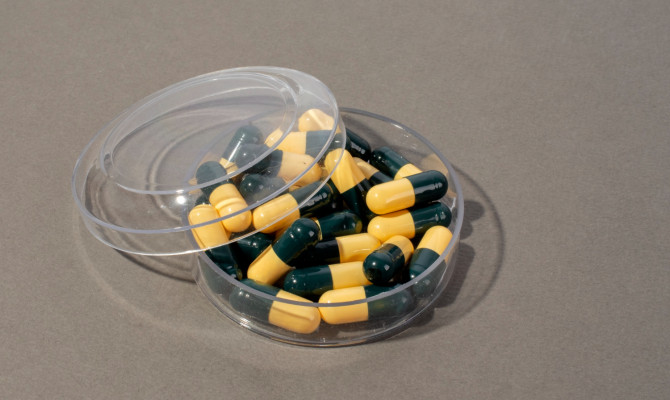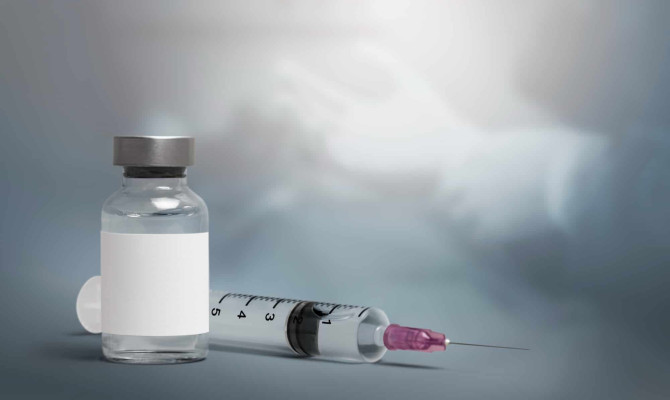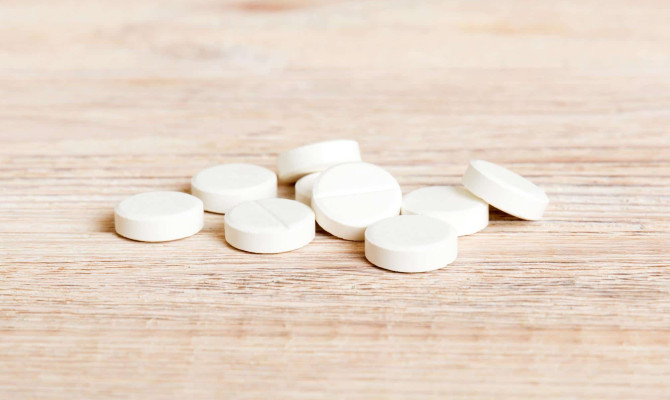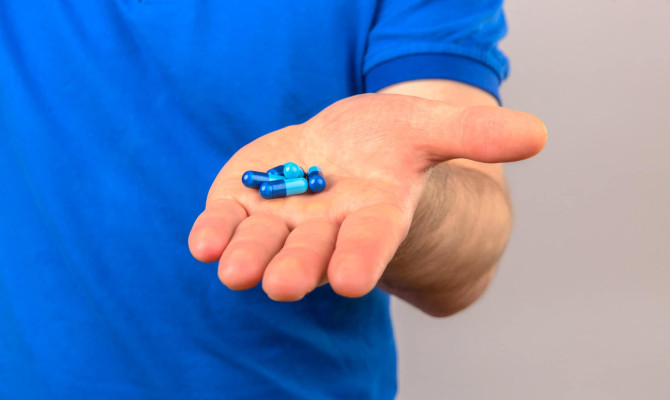All about Asacol

- Asacol
- 16 Aug 2023
Overview
What is Asacol ?
Asacol is a brand name for Mesalamine, chemically called as 5-Aminosalicylic Acid (5-ASA). This medication is also available with the brand names Pentasa, Canasa, Rowasa, Mesacol, and Lialda. Asacol similarly reduces swelling and inflammation, although it is not a steroid. These medications are anti-inflammatory drugs. This article explains a few facts about the medicine, its uses, how it functions within the body, adverse reactions, dosage, precautions, and drug interactions.

Key facts
Key facts of Asacol
- Asacol is a member of the amino salicylate drug class.
- This medication is broken down in the liver and the gastrointestinal tract.1Key facts| Researched based study from Nlm.nih.gov
- The body excretes this drug in the urine and feces, depending on the drug’s composition.
- The FDA has given the medication approved for the remission of mild to moderate ulcerative colitis.2Key facts| Researched based study from Fda.gov
- Asacol was later discontinued and taken off the market by the FDA, and it was added it to the Discontinued Drug Product List due to the presence of dibutyl phthalate (DBP), which has the potential to be harmful, particularly for growing children and pregnant women3Key facts| Researched based study from Federalregister.gov
How does the drug work?
- It prevents the body from manufacturing prostaglandins and leukotrienes, which can cause inflammation4Key facts| Researched based study from Medlineplus.gov
- In addition, it reduces immunity and scavenges free radicals. 5Key facts| Researched based study from Nlm.nih.gov
Uses
Uses of Asacol
Asacol tablet uses may include:
Treatment of Ulcerative Colitis
- Asacol is a fantastic initial treatment for managing mild to moderate ulcerative colitis. 6Uses| Researched based study from Nlm.nih.gov
- A suppository formulation is a possibility for a disease restricted to the rectum. However, doctors recommend mesalamine enemas for diseases that spread into the sigmoid colon.
- In general, topical mesalamine formulations are preferred to oral versions and topical glucocorticoids unless the patient cannot tolerate or refuses to take topical mesalamine.7Uses| Researched based study from Nlm.nih.gov
Managing remission of ulcerative colitis
- Asacol suppositories treat and prevent relapse of mild to moderate ulcerative colitis in the rectum8Uses| Researched based study from Medsafe.govt.nz
Manages Crohn’s disease
- After surgically removing the portion of the intestine damaged by Crohn’s disease, doctors may also prescribe Asacol to those patients.8Uses| Researched based study from Medsafe.govt.nz
Dosage
Dosage of Asacol
Dose available for oral use
- Delay-release 400 mg capsules of Asacol is available.
- Extended-release capsules in strengths of 250 mg, 375 mg, or 500 mg.
- Tablets with a delayed release are available in 800 mg and 1200 mg.
Available Rectal formulations
- 4 g as an enema.
- A 1000 mg rectal suppository of Asacol.
For ulcerative colitis that is mild to moderate
- In adults –Asacol capsule, delayed release, 800 mg, thrice a day, every six weeks.
- Children aged five and older –2.4 g/day, split into two dosages daily for six weeks. (Given a person’s weight)
Asacol® delayed-release pills to treat and prevent ulcerative colitis
- In adults –1.6 g – four 400 mg pills taken in 2 to 4 doses.9Dosage| Researched based study from Mayoclinic.org
- In children –The doctor must decide on the use and dosage.
Administration
- Asacol can be taken orally as a pill or capsule with or without meals.
- Depending on the formulation, mesalamine can release at various locations throughout the gastrointestinal system.
- This medication is assumed to function topically, and its effectiveness is based on the amount present at the location of the currently active disease.10Dosage| Researched based study from Nlm.nih.gov
- Mesalamine may also be given through the rectum as a foam, suppository, or enema.
- Asacol suppository and enema are two topical preparations that are preferred for treating ulcerative colitis.5Dosage| Researched based study from Nlm.nih.gov
- Crushing, chewing, or cutting mesalamine extended-release products is also not advised.
Side effects
Side effects of Asacol
Some common side effects of Asacol may include the following and may not need medical attention:
- Headache
- Nausea
- Diarrhea 10Side effects| Researched based study from Nlm.nih.gov
- Sore throat
- Runny nose
- Stuffy nose
- More burps or farts
- Stomach pain
- Sensitivity to light
Some severe side effects include the following and should be reported right away to a doctor:
- Allergic reactions include skin rashes, hives, itching, lips, tongue, face, or tongue swelling.
- Fever, skin rashes, and lymph node swelling.
- Trouble breathing.
- Chest pain
- Dizziness
- Weakness or fatigue
- Irregular heartbeat
- Swollen ankles, hands, or feet 11Side effects| Researched based study from Nlm.nih.gov
- Lower back pain on the sides
- Decreased urine
- Trouble passing urine
- Blood in urine
- Right upper abdomen pain
- Dark yellow or brown urine
- Yellowing of skin or eyes 12Side effects| Researched based study from Clevelandclinic.org
- Constipation
- Pale stool
- Loss of hunger
- Body pain
- Bloody diarrhea
- Muscle cramping
- Joint pain with warmth
- Redness, blistering, or peeling of skin
- Blistering or ulcerations in the mouth
Contraindications
Who should avoid taking Asacol?
The following individuals should not take Asacol:
- Individuals who are sensitive to mesalamine, amino salicylates, or salicylates.
- People who suffer from severe kidney disease.
- Those who have advanced liver disease.
- People who have a urinary tract blockage.
- Those who already have stomach, intestinal, or duodenal ulcers.1Contraindications| Researched based study from Nlm.nih.gov
- Young children under the age of two.
Precautions
Precautions
- Patients on this medication should drink more water to lower their risk of kidney stones. 13Precautions| Researched based study from Medicines.org.uk
- If kidney function deteriorates, patients with kidney disease should stop the medications immediately.
- Mesalamine may cause intolerance in some people showing symptoms like bloody diarrhea, stomach pain, fever, cramps, headache, or a rash, and people must stop the medication if such symptoms occur. 1Precautions| Researched based study from Nlm.nih.gov
- Because there is an increased risk of photosensitivity reactions when using Asacol, patients should limit exposure to the sun, use protective clothing when necessary, and apply broad-spectrum sunscreen.9Precautions| Researched based study from Mayoclinic.org
- Patients with liver diseases should take Asacol with caution because mesalamine has been linked to liver failure in those patients.
- In pregnant women – There isn’t sufficient research on Asacol use in pregnant women that has been carefully controlled. Asacol should only be taken during pregnancy if the advantages outweigh the potential dangers to the fetus.
- Breastfeeding mothers – Human milk contains mesalamine as well as its N-acetyl metabolite. Care should be taken when giving mesalamine to a breastfeeding woman.
- Due to the presence of lactose, lactose intolerant people should use caution when using this medication. 8Precautions| Researched based study from Medsafe.gov.nz
Overdose
Overdose effects of Asacol
Do not exceed the dosage that the doctor recommended. Overdose symptoms frequently include:
- Excessive sweating
- Vomiting
- Rapid breathing
- Lightheadedness 8Overdose| Researched based study from Medsafe.gov.nz
Immediately contact the local Poisons Information Center, a nearby hospital, or a physician if one experiences any of the above due to an overdose.
Interactions
Asacol interactions with other medicines
The following are a few medicines that may interact with Asacol:
Blood-thinning medicines
- Blood-thinning medications, such as Warfarin or heparin, when taken along with Mesalamine, can boost their effects and raise the risk of bleeding or bruising. 8Interactions| Researched based study from Medsafe.gov.nz
Immunosuppressants
- Immunosuppressive medications, such as mercaptopurine, azathioprine, or thioguanine, may increase the risk of bone marrow suppression when used with mesalamine. 14Interactions| Researched based study from Nlm.nih.gov
Antacids
- Antacids may interfere with mesalamine formulations that depend on pH, causing the early release and reducing the drug’s therapeutic impact. 1Interactions| Researched based study from Nlm.nih.gov
NSAID’s
Mesalamine use when taking NSAIDs increases the risk of kidney damage.14Interactions| Researched based study from Nlm.nih.gov
Before taking Asacol, it is recommended that people discuss all the medications they are currently taking, including prescription drugs, over-the-counter medicines, herbal drugs, and supplements, as some medicines can interact with Asacol.
Any feedback on this article?
 This Articles content was accurate
This Articles content was accurate Very Informative Article
Very Informative Article I have a question or a comment
I have a question or a comment
 This article contains inaccurate content
This article contains inaccurate content This article was not helpful
This article was not helpful I have a question or a comment
I have a question or a comment
We appreciate your helpful feedback!
Checkout our social pages
References
-
National Library of Medicine
Mesalamine | Key facts
-
Food and Drug Administration
Asacol® | Key facts
-
Federal Register
Determination That ASACOL HD (Mesalamine) Delayed-Release Tablet, 800 Milligrams, Was Not Withdrawn From Sale for Reasons of Safety or Effectiveness | Key Facts
-
Medline Plus
Mesalamine | Key facts
-
National Library of Medicine
Ulcerative Colitis: Current Treatment Strategies and Future Prospects | Key facts
-
National Library of Medicine
The role of mesalamine in the treatment of ulcerative colitis | Uses
-
National Library of Medicine
Ulcerative colitis: diagnosis and management | Uses
-
New Zealand Consumer Medicine Information
ASACOL | Uses
-
Mayo Clinic
Mesalamine (Oral Route) | Dosage
-
National Library of Medicine
Mesalamine in the treatment and maintenance of remission of ulcerative colitis | Dosage
-
National Library of Medicine
The culprit of mesalamine intolerance: case series and literature review | Side effects
-
Cleveland Clinic
Mesalamine Delayed-Release Capsules (Delzicol) | Side effects
-
Electronic medicines compendium
Asacol 400mg MR Tablets | Precautions
-
National Library of Medicine
Leucopenia resulting from a drug interaction between azathioprine or 6-mercaptopurine and mesalamine, sulphasalazine, or balsalazide | Interactions






































